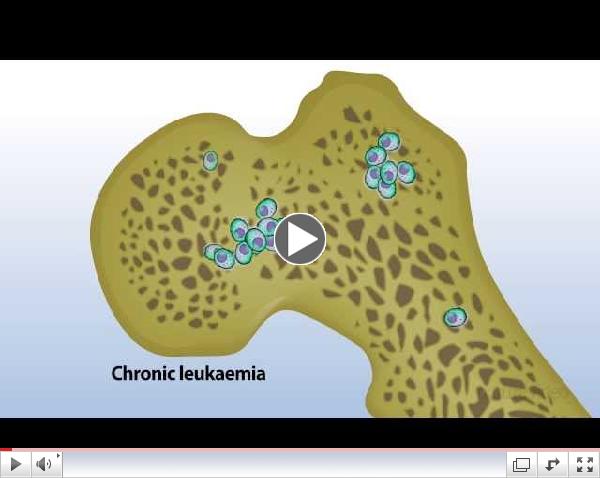|
BE SOCIAL
| |
__________________

Join our Cause
__________________

|
|
FEATURED VIDEO
|
 | | Leukaemia: When blood goes bad |
| |
An easy to understand video from
Nature explaining the origins of leukemia and its subtypes
|
|
|
EXTRA! EXTRA!
| 
Click here to read the latest issue of the CLL Research Momentum (2013- Issue 1).
This issue features an interview with Dr. Neil Kay (Mayo Clinic). Dr. Kay discusses his projects supported by CLL Global.
 | | Dr. Neil Kay |
SEND US YOUR MAILING ADDRESS IF YOU WOULD LIKE TO RECEIVE HARD COPIES OF THE CLL RESEARCH MOMENTUM.
info@cllglobal.org |
|
FDA 101 | |
 Learn about FDA mechanisms to speed new drug approvals. What does it mean to have a breakthrough designation? Learn about FDA mechanisms to speed new drug approvals. What does it mean to have a breakthrough designation?
FDA Terms Explained |
|
SUNSCREEN PRECAUTION | |
 Spraying sunscreen near sources of flame can result in significant burns that require medical treatment. Spraying sunscreen near sources of flame can result in significant burns that require medical treatment.
See FDA Warning |
|
QUESTIONS/COMMENTS? | |
Is there something specific you want to read and learn about?
Let us know if you have any comments or suggestions for improvement.
You are the reason CLL Global exists, and we want to hear from you.
info@cllglobal.org |
|
DONATE NOW!! | |

|
|
|
|
Greetings!
This issue is all about SUMMER. We bring you an inside look into our Summer Alliance Meeting and a reminder to protect your skin this time of year. The year is flying by and we are proud to say that CLL research is having a productive 2013. |
|
|
THE HAPPENINGS | |
Summer Alliance Meeting
In June, CLL Global hosted its semi-annual Alliance meeting in Stockholm, Sweden. The meeting is an opportunity for committed CLL experts to discuss their ongoing research and develop future research concepts. The Alliance meeting is conveniently timed to occur after two major international meetings; this allows the Alliance participants to discuss the newly presented data and to incorporate these findings into future research plans.
 | Alliance members (L-R): Drs. Caligaris-Cappio, Kipps and Mellstedt.
|
Much of the conversation centered on new agents in development. Given the buzz around B-cell signaling, it was no surprise that signal inhibitors were a major focus of discussion. Drugs such as ibrutinib and idelalisib are showing dramatic efficacy. BCL-2 inhibitors and the next generation of monoclonal antibodies were also discussed. Several Alliance participants emphasized the need to develop all of these new agents as many patients will require a combination of agents. There was a lively discussion on how to best combine these new agents. Ultimately, the consensus was that it is too early to tell at this time. The physicians are also grappling with how to most effectively suppress the disease and produce long-lasting control minimizing the risk of the disease transforming into Richter's.
Another major topic was developing options for various subgroups of patients. The patient subgroup with loss of part of chromosome 17p or mutation of the p53 gene remains difficult to treat. One of the concepts that evolved from last year's Alliance meeting was an ibrutinib clinical trial specifically for patients with the 17p/p53 abnormality or mutation. The international study rapidly completed enrollment. Physicians are still exploring other viable treatment options for this group.
Representatives from our host country of Sweden presented ongoing research with the protein ROR1. Professor Hakan Mellstedt and Anders Osterborg, both from the Karolinska Institute, presented a range of possibilities to target ROR1 including a ROR1-specific CAR, monoclonal antibodies and small molecules which block the signaling pathway of ROR1. As mentioned previously, ROR1 is a protein relatively specific to CLL. It functions as an enzyme to drive the CLL. Although recent studies indicate ROR1 to be found in other cancers such as melanoma and breast cancer but not normal tissue. As a result of this meeting, CLL Global plans to increase interaction among Alliance members regarding ROR1.
The two and half days was packed with scientific presentations and interactions. It is clear that investigators are approaching CLL research from many different fronts. We have come back from the Alliance meeting energized to move forward. |
|
CLL IN THE NEWS
| |
2013: A Busy Year for CLL Research
Somehow, we are half-way through another year. It is clear that 2013 is shaping up to be a busy year for CLL research. Data continues to emerge from ongoing studies, and the public eye has been on CLL. One example, Time Magazine's June 20 issue featured an article titled "New Drug May Be Best Treatment for Leukemia Yet." The article reported on a Phase1b/2 study of ibrutinib reported in The New England Journal of Medicine. The study which enrolled patients with relapsed or refractory CLL showed an overall response rate of 71%. Patients were given one of two fixed-dose regimens of ibrutinib. Patients with difficult to treat 17pdel also responded well, with a 68% response rate.
 Ibrutinib as well as obinutuzumab (formerly GA101) have been given breakthrough therapy designation by the Food and Drug Administration (FDA). Congress enacted this designation in 2012 so the full implication of this status is still unknown, but the intention is to expedite the development and review of medicines with preliminary clinical evidence that the drug may provide substantial improvement over existing therapies. Ibrutinib as well as obinutuzumab (formerly GA101) have been given breakthrough therapy designation by the Food and Drug Administration (FDA). Congress enacted this designation in 2012 so the full implication of this status is still unknown, but the intention is to expedite the development and review of medicines with preliminary clinical evidence that the drug may provide substantial improvement over existing therapies.
Genentech, which makes obinutuzumab, has submitted its application for FDA approval based on its pivotal Phase III CLL11 trial. This study showed an 86% reduction in the risk of disease worsening or death when combined with chlorambucil compared to chlorambucil alone in previously untreated CLL patients. FDA has an action date of December 30, 2013 so there could be an FDA-approval of a new drug for CLL in 2013. While patients wait for approval of obinutuzumab, Genentech has opened up an expanded access program in the US to provide the drug for previously untreated patients with CD20-positive CLL. For more information visit clinicaltrials.gov
|
CLL EDUCATION
| |
Care For Your Skin This Summer
Most of you do not need a reminder that it is summer. All you need to do is walk outside and feel the heat. We do want to remind you to protect yourself with sunscreen this summer. Approximately 15% of CLL patients will d evelop skin cancer as a secondary malignancy. Squamous cell carcinoma is the most common skin cancer reported in CLL patients, but patients also experience basal cell carcinoma, Merkel-cell carcinoma and melanoma. In general, skin cancer is often more aggressive in CLL patients compared with people who have never had cancer, and CLL patients are at a higher risk of developing recurrent skin cancer. evelop skin cancer as a secondary malignancy. Squamous cell carcinoma is the most common skin cancer reported in CLL patients, but patients also experience basal cell carcinoma, Merkel-cell carcinoma and melanoma. In general, skin cancer is often more aggressive in CLL patients compared with people who have never had cancer, and CLL patients are at a higher risk of developing recurrent skin cancer.
Researchers are still working to understand why CLL patients have a higher susceptibility to skin cancer. We know that CLL negatively affects the immune system and is associated with deficient DNA repair. This DNA damage may be the culprit behind higher susceptibility. Patients who need treatment for their CLL are at an even greater risk because their immune system is further compromised.
While researchers are working to better understand skin cancers in CLL, we remind you to protect your skin with protective clothing, sunscreen and shade. Be on the lookout for changes to your skin. Check your moles regularly for any changes in size, shape, color or texture. Have a yearly total skin check with a dermatologist.
|
|
THANK YOU FOR SUPPORTING US! | | |
Thanks for joining us for another issue of Tidbits. Stay cool and safe.
Sincerely,
CLL Global Research Foundation
|
|
|